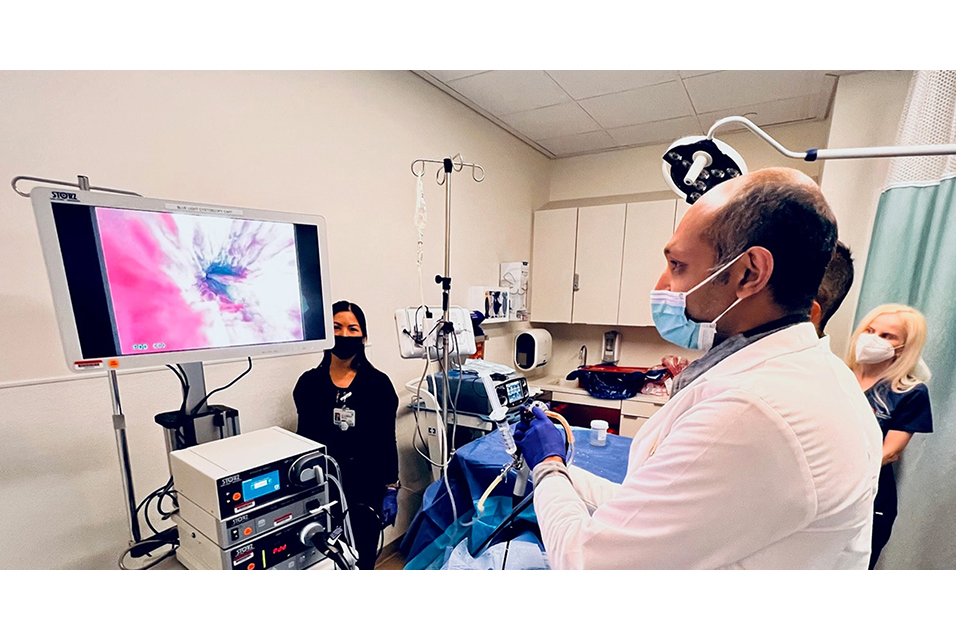SAN DIEGO, CA.- UC San Diego Health is the first health system in San Diego County to offer a new technology that detects and monitors bladder cancer in both the clinic and operating room settings by using blue light, white light and an imaging dye that makes cancer cells glow florescent pink.
“This new in-clinic component improves our ability to catch tumors earlier, identify tumors that might have been missed and help decrease the rates of recurrence and progression,” said Aditya Bagrodia, MD, urologic oncologist at UC San Diego Health.
Called Blue Light Cystoscopy (BLC) with Cysview, the FDA-approved procedure allows urologists to pinpoint tumors. About an hour prior to the clinic procedure, the imaging dye is placed into the bladder using a catheter.
During the cystoscopy, the urologist first looks inside the bladder using white light, then switches to blue light mode. In blue light, cancerous tumors that may not have been picked up by the white light suddenly glow pink, allowing urologists to identify and remove tumors more easily.
“The availability of this new technology illustrates our commitment to advancing patient care,” said Christopher Kane, MD, urologist and chief executive officer of UC San Diego Health Physician Group. “At UC San Diego Health, patients with known or suspected bladder cancer undergo diagnostic procedures performed by physicians who have been specially trained in the use of this innovative technology.”
UC San Diego Health is one of only 33 locations in the nation able to offer this full continuum of care.
“About 50% of people diagnosed with bladder cancer will have a recurrence within five years, so that can mean many trips to the operating room in a person’s lifetime,” Bagrodia said. “Now, we can detect those tumors earlier in clinic, ultimately helping to prevent the cancer from progressively growing.”
Bladder cancer is the sixth most common cancer in the United States. It is often difficult to detect and has the highest rate of recurrence of any form of cancer, according to the National Cancer Institute.
White light cystoscopy has long been the standard of care for detecting suspicious bladder lesions. Now, since being included in the American Urological Association/Society of Urologic Oncology guidelines for non-muscle-invasive bladder cancer, this new form of BLC is becoming the new standard.









